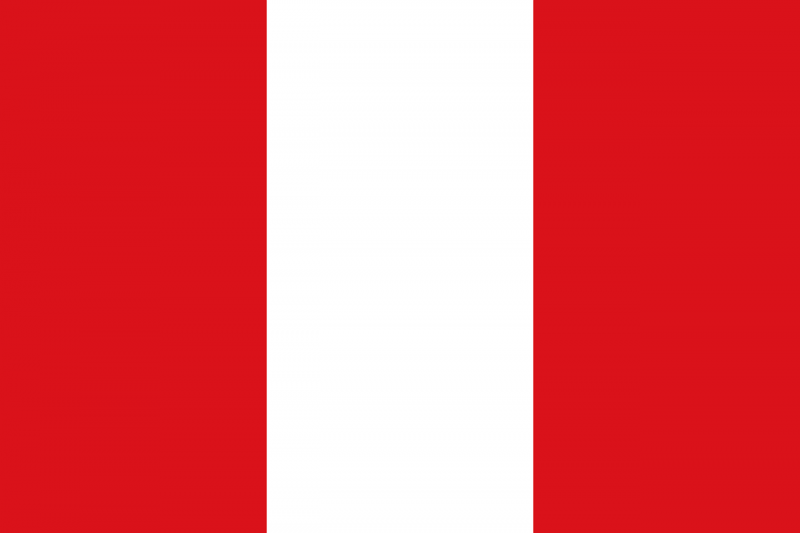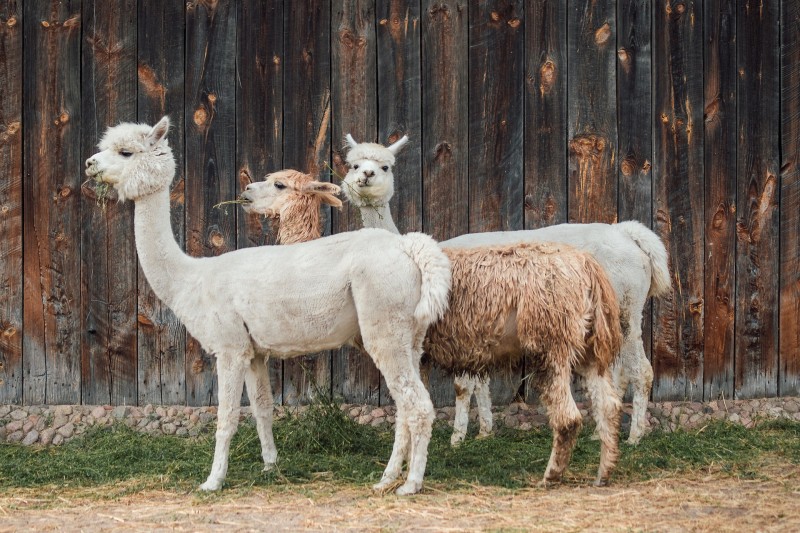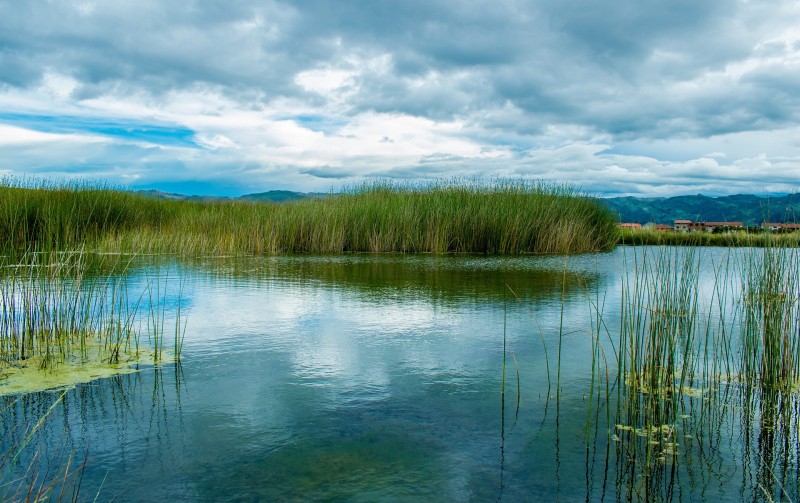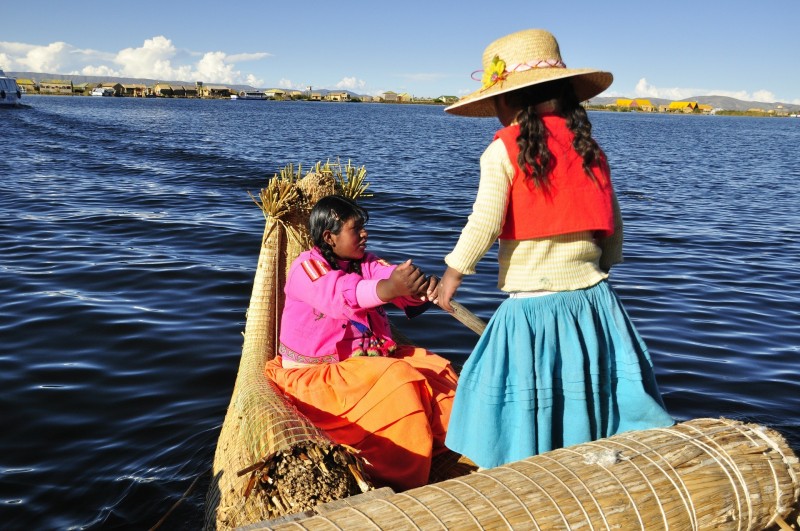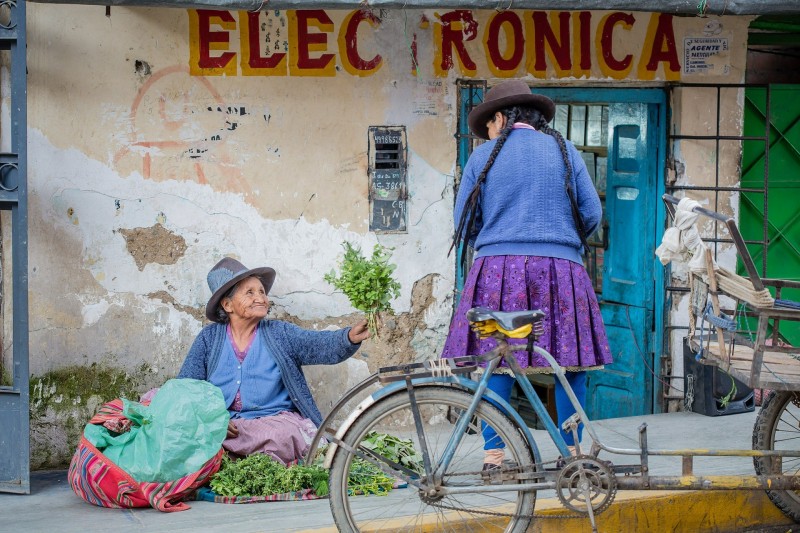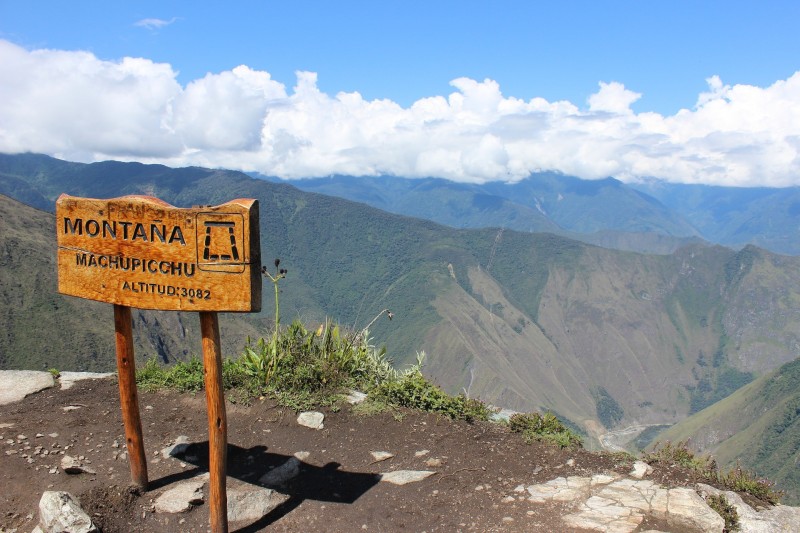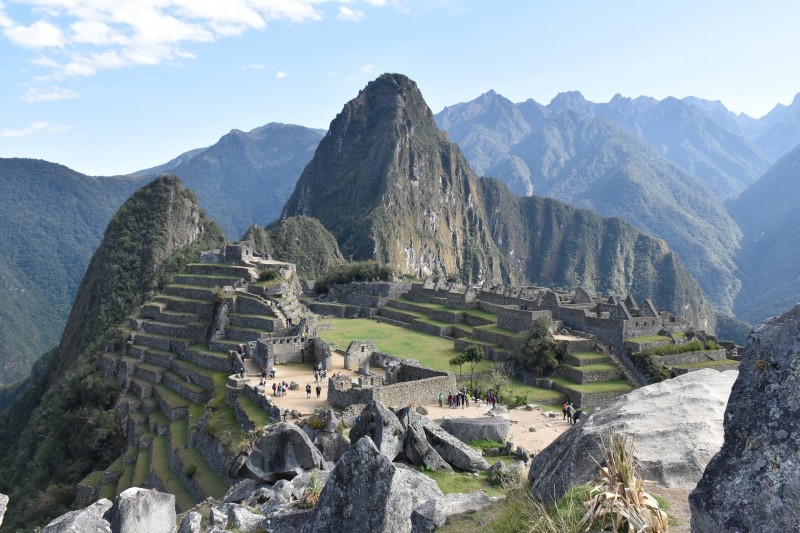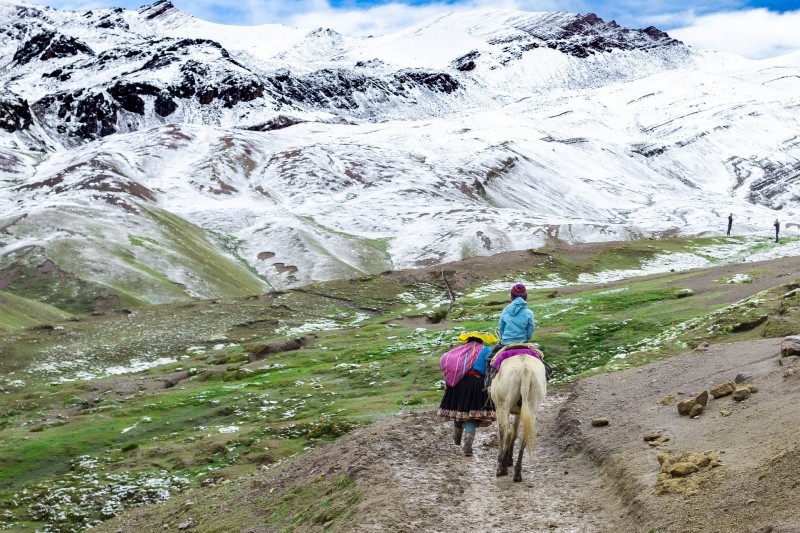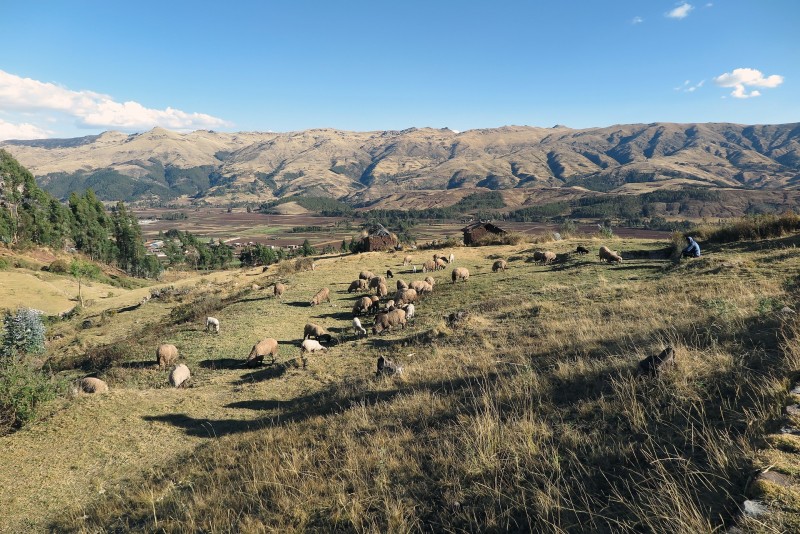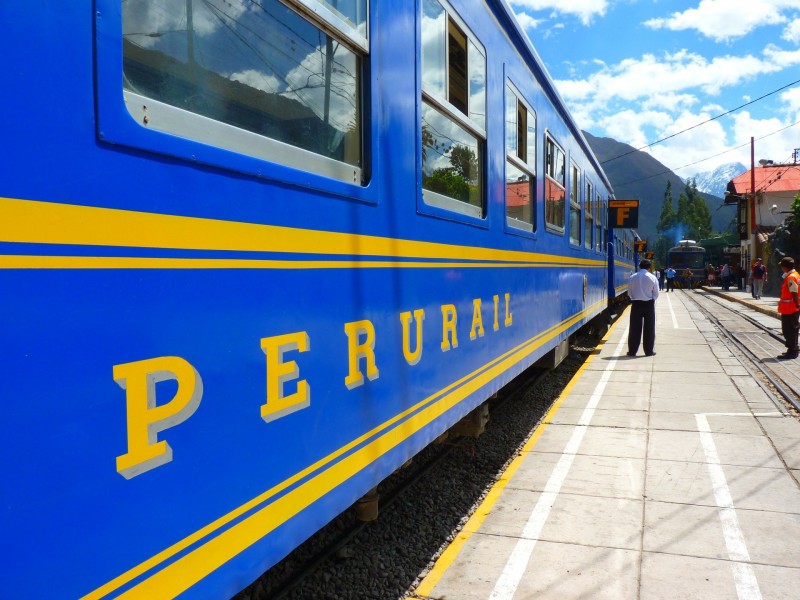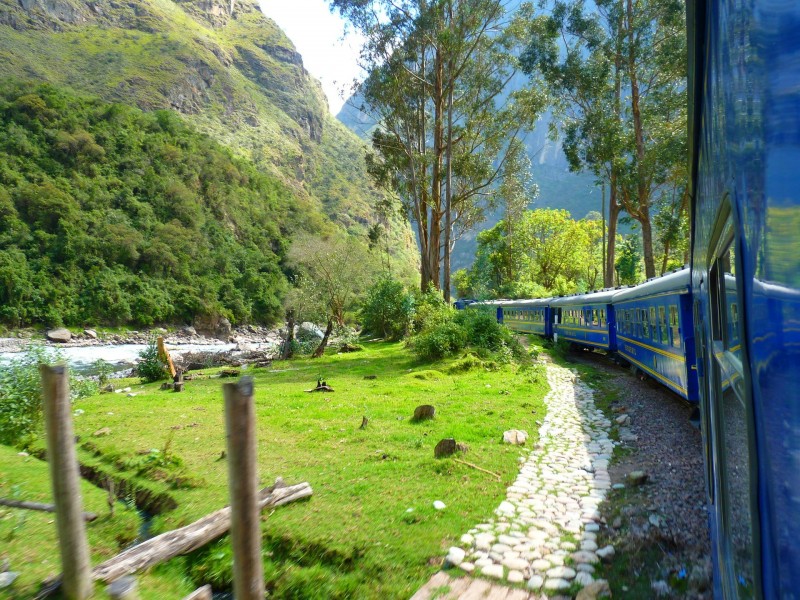Peru
Peru
Capital city description
Lima is the capital and the largest city of Peru. It is located in the valleys of the Chillion, Rimac, and Lurin Rivers, in the desert zone of the central coastal part of the country, overlooking the Pacific Ocean. Together with the seaport of Callao, it forms a contiguous urban area known as the Lima Metro Politan Area. With more than 9.5 million population, Lima is one of the largest cities in America.
Lima was named by natives in the agricultural region known by native Peruvians as Limaq. Following the Peruvian War of Independence. Eventually became the capital of the Republic of Peru (República del Perú). Eventually became the capital and most important city in the Viceroyalty of Peru. Around one-third of the national population lives in the metropolitan area.
Climate
- Summer: Dec. 22 - Mar. 21 (the rainy season in the highlands and jungle)
- Autumn: Mar. 22 - Jun. 21
- Winter: Jun. 22 - Sept. 22
- Spring: Sept. 23 - Dec. 21
In Peru, a country located just south of the Equator, there are three climate zones:
- a coastal desert strip (called la Costa), with a mild climate, cloudy and foggy in winter and pleasantly warm in summer;
- the Andean zone (la Sierra), more or less cold depending on altitude;
- the large eastern area is covered by the Amazonian forest (la Selva), with a hot and humid climate throughout the year.
Languages spoken
The primary language spoken in Peru is Spanish, used by about 80% of the population, while most of the rest speak indigenous languages like Quechua and Aymara. In areas with a lot of international visitors, English is widely spoken.
Fun/Fascinating Facts
1. Forget the Sahara Desert; Peru has the highest dune in the World!
Cerro Blanco dune, located in the Sechura Desert in the south of Peru, measures 3,860 feet from the base to the summit. It towers over the quaint desert oasis town, Huacachina, and the best part of all is that you can ride dune buggies for hours and up to the top of the dunes and then strap a board to your feet and sandboard down it to the town below!
2. There are over 3,000 different varieties of Potato grown in Peru
The Potato is originally from Peru, and there are over 3,000 different varieties. Proud Peruvians use “Soy mas Peruano que la papa” (I am more Peruvian than the Potato). Modern scientists are reverting to Ancient Peruvian planting methods to prevent strains of genetically modified potatoes from losing their resistance to famine.
3. Spanish is not the only language spoken in Peru
There are three (3) official languages in Peru: Spanish, Quechua, and Aymara, but east of the Andes in Amazon jungle regions, it is thought that natives speak 13 different indigenous languages.
4. Machu Picchu is of the New Seven Wonders of the World
The Lost City of Machu Picchu, one of the most famous landmarks in Peru, was voted in 2007 as one of the New Seven Wonders of the World. Rediscovered in 1911 by explorer, professor, and archaeologist Hiram Bingham, the site of the historic Incan civilization rests on a mountain ridge almost 8,000 feet above sea level in the Sacred Valley. Still, there is no easy way to get there, making it even more impossible to believe that the whole site was built by hand over a mile up in the mountains when most people struggle to merely walk up the stairs carrying only a camera and a water bottle. You can only hike in or take a train and then a bus. It may be the most magical place on Earth; forget Disneyland. It takes your breath away to be in the presence of such an unbelievable testament of human capability.
5. The Largest Flying Bird on Earth can be found in Peru, The Giant Andean Condor
If you want to see landscapes that look like the moon, take a quick jumper flight to Arequipa and then a bus ride over the towering Andes Mountains to Colca Canyon. You will see massive volcanoes, wild llamas grazing, and the largest bird on Earth, the Giant Andean condor. Colca Canyon is home to the largest bird in the World, standing up to 4 feet high with a wingspan of up to 14 feet! Despite weighing up to 27 pounds, the bird can fly for hours without using its wings. Native to the Andes, it was considered a sacred bird by the Incas but is now listed as “vulnerable” by the World Conservation Union.
Unique Customs/Traditions
Meeting and Greeting
- The Abrazo is the most common greeting between friends and family. This greeting comprises a handshake, a hug for men, and a kiss on the right cheek between women. Those familiar with each other will also use a nickname or an individual's first name.
- Where handshakes occur between people who are unfamiliar with each other, the grip is light, and eye contact is made. Greetings tend to become warmer as individuals get to know each other more.
- While shaking hands, use the appropriate greeting for the time of day: "Buenos Dias" (good day), "Buenas Tardes" (good afternoon), or "Buenas Noches" (good evening/night).
- Older people should be addressed as "Señor" for men or "Señora" for women, followed by their surname.
Gift Giving Etiquette
- Gifts are not expected but get something like fruit, a potted plant, chocolate, or liquor if you decide to bring a gift.
- Avoid anything symbolic such as scissors which may be perceived as your intention to cut ties.
- It is usual for Peruvians to open gifts upon receipt.
Dining Etiquette
Dining etiquette is quite formal in Colombia as they tend to give importance to etiquette and presentation.
Below are some essential tips - if you are ever unsure, the general rule is "observe and follow":
- Wait to be seated by the host.
- Hands should be kept visible when eating.
- Do not rest elbows on the table.
- The host will say "Buen provecho" (enjoy or have a good meal) as an invitation to start eating.
- It is polite to try everything you are given.
- Unusually all food is eaten with utensils - even fruit is cut into pieces with a knife and fork.
- It is considered polite to leave a small amount of food on your plate when eating.
- Do not use a toothpick at the table.
Tipping
- Tipping isn't a big part of Peruvian culture, and it's not expected in most places.
- Away from the cities, tipping is far less common. However, serving staff are likely to receive tips with gratitude. in some high-end establishments, you may wish to give a tip of 10% for good restaurant service (if a gratuity has not already been added onto the bill).
Popular universities
| Name | Description | |
|---|---|---|
| Pontificia Universidad Católica del Perú | Pontificia Universidad Católica del Perú (Pontifical Catholic University of Peru), founded in 1917, is a non-profit private higher education institution located in the urban setting of the large metropolis of Lima. Officially recognized by the Ministerio de Educación, Peru (Ministry of Education of Peru), Pontificia Universidad Católica del Perú (PUCP) offers courses and programs leading to officially recognized higher education degrees such as pre-bachelor degrees (i.e., certificates, diplomas, associate or foundation), bachelor degrees, master degrees, doctorate degrees in several areas of study. | |
| Universidad Nacional Mayor de San Marcos | Universidad Nacional Mayor de San Marcos (National Major San Marcos University), founded in 1551, is a non-profit public higher education institution located in the urban setting of the large metropolis of Lima. Officially recognized by the Ministerio de Educación, Peru (Ministry of Education of Peru), Universidad Nacional Mayor de San Marcos (UNMSM) is a vast coeducational Peruvian higher education institution. Universidad Nacional Mayor de San Marcos (UNMSM) offers courses and programs leading to officially recognized higher education degrees such as bachelor's degrees, master's degrees, doctorate degrees in several areas of study. | |
| Universidad Peruana de Ciencias Aplicadas | Founded in 1551, Universidad Nacional Mayor de San Marcos (National Major San Marcos University), a non-profit public higher education institution located in the urban setting of the large metropolis of Lima. Officially recognized by the Ministerio de Educación, Peru (Ministry of Education of Peru). Universidad Nacional Mayor de San Marcos (UNMSM) offers courses and programs leading to officially recognized higher education degrees such as bachelor's degrees, master's degrees, doctorate degrees in several areas of study. | |
| Universidad Peruana de Ciencias Aplicadas | Founded in 1994, Universidad Peruana de Ciencias Aplicadas (Peruvian University of Applied Sciences), a for-profit private higher education institution located in the large metropolis of Lima. Officially recognized by the Ministerio de Educación, Peru (Ministry of Education of Peru), Universidad Peruana de Ciencias Aplicadas (UPC) is a vast coeducational Peruvian higher education institution. Universidad Peruana de Ciencias Aplicadas (UPC) offers courses and programs leading to officially recognized higher education degrees such as bachelor's degrees in several areas of study. | |
| Universidad de Lima | Universidad Nacional Mayor de San Marcos (National Major San Marcos University), a non-profit public higher education institution located in the urban setting of the large metropolis of Lima (population range of over 5,000,000 inhabitants). Founded in 1551 and officially recognized by the Ministerio de Educación, Peru (Ministry of Education of Peru), Universidad Nacional Mayor de San Marcos (UNMSM) is an extensive coeducational Peruvian higher education institution. Universidad Nacional Mayor de San Marcos (UNMSM) offers courses and programs leading to officially recognized higher education degrees such as bachelor's degrees, master's degrees, doctorate degrees in several areas of study. | |
| Universidad Nacional de San Agustín de Arequipa | Universidad Nacional de San Agustín de Arequipa (National University of San Agustín de Arequipa) is a non-profit public higher-education institution located in the urban setting of the metropolis of Arequipa. Established in 1828 and officially recognized by the Ministerio de Educación, Peru (Ministry of Education of Peru), Universidad Nacional de San Agustín de Arequipa (UNSA) offers courses and programs leading to officially recognized higher education degrees such as bachelor's degrees, master's degrees, doctorate degrees in several areas of study. | |
| Universidad del Pacifico | Universidad del Pacifico (University of the Pacific) is a non-profit private higher education institution located in the urban setting of the large metropolis of Lima. Established in 1962 and officially recognized by the Ministerio de Educación, Peru (Ministry of Education of Peru), Universidad del Pacifico (UP) is a small coeducational Peruvian higher education institution. Universidad del Pacifico (UP) offers courses and programs leading to officially recognized higher education degrees such as pre-bachelor's degrees (i.e., certificates, diplomas, associate or foundation), bachelor degrees, master's degrees in several areas of study. | |
| .Universidad de San Martín de Porres | Universidad de San Martín de Porres (University of San Martín de Porres), a private higher education institution located in the large metropolis of Lima. Established in 1962 and officially recognized by the Ministerio de Educación, Peru (Ministry of Education of Peru), Universidad de San Martín de Porres (USMP) is a coeducational Peruvian higher education institution. Universidad de San Martín de Porres (USMP) offers courses and programs leading to officially recognized higher education degrees such as bachelor's degrees in several areas of study. | |
| Universidad César Vallejo | Universidad César Vallejo (César Vallejo University), a private higher education institution located in the large city of Trujillo, La Libertad.Founded in 199 and officially recognized by the Ministerio de Educación, Peru (Ministry of Education of Peru), Universidad César Vallejo (UCV) is a coeducational Peruvian higher education institution. Universidad César Vallejo (UCV) offers courses and programs leading to officially recognized higher education degrees such as bachelor's degrees in several areas of study. | |
| Universidad ESAN | Universidad ESAN (ESAN University), a private higher education institution located in the large metropolis of Lima . Founded in 2003 and officially recognized by the Ministerio de Educación, Peru (Ministry of Education of Peru), Universidad ESAN (UE) is a coeducational Peruvian higher education institution. Universidad ESAN (UE) offers courses and programs leading to officially recognized higher education degrees such as master's degrees, doctorate degrees in several areas of study. | |
Festivals & Events

Trujillo Marinera Festival
Date: January
Trujillo, a coastal city in northern Peru, is the traditional home of the marinera, an elegant couple's dance using handkerchiefs as props. Since 1986, this dance's official national capital, a status celebrated annually in a month-long marinera festival held throughout the city!
The Festival de Marinera, as it's known in Spanish, features dance competitions, parades, and even exhibitions of the Peruvian Paso, a breed of horse also recognized as part of the cultural patrimony of the Trujillo region. One of our favorite Peruvian festivals, this one is a can't miss if you find yourself in the area during January.

Fiesta de la Candelaria
Date: February 2
The Fiesta de la Candelaria is the largest and most famous festival in Peru and one of the largest in South America as a whole. In fact, throughout the continent, it's only dwarfed by the world-famous Carnival in Rio de Janeiro and the Carnaval de Ouro in Bolivia.
The first of many religious Peruvian festivals on our list, the Fiesta de la Candelaria celebrates the Virgin of Candelaria, the patron saint of the town of Puno, where the festivities are held. Music and dance are at the core of this festival, all of it performed by elaborately costumed participants numbering well over 40,000. This occasion is an incredible two-week-long synthesis of indigenous and Catholic traditions; this is one of the most iconic Peruvian festivals.
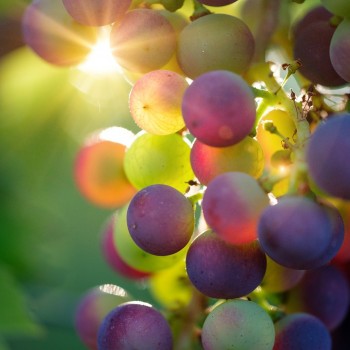
Festival Internacional de la Vendimia
Date: March
The Fiesta de la Candelaria is the largest and most famous festival in Peru and one of the largest in South America as a whole. In fact, throughout the continent, it's only dwarfed by the world-famous Carnival in Rio de Janeiro and the Carnaval de Ouro in Bolivia.
Music and dance are at the core of this festival, all of it performed by elaborately costumed participants numbering well over 40,000. This occasion is an incredible two-week-long synthesis of indigenous and Catholic traditions; this is one of the most iconic Peruvian festivals.
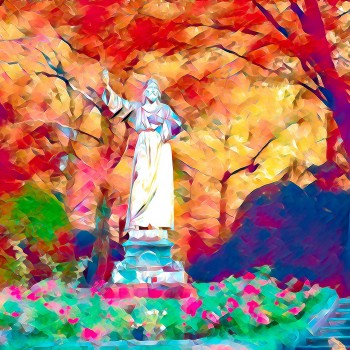
Festividad del Señor del los Temblores del Cusco
Date: April - Holy Monday
El Señor de Los Temblores, or the Lord of the Earthquakes, is the patron saint of Cusco and the celebratory focus of this significant Holy Week celebration. The story goes that during an earthquake here in 1650, a canvas image of Jesus Christ was held to the sky as prayers were offered, causing the tremors to subside and saving the town from ruin. Since then, this statue commemorating the original image has become the focal point of an important annual celebration.
Each Easter Monday at 7 PM, the statue is removed from Cusco's cathedral and paraded. Amazingly, it's said that the statue was not originally black, but rather that its color is due to years of exposure to smoke from incense during religious ceremonies.
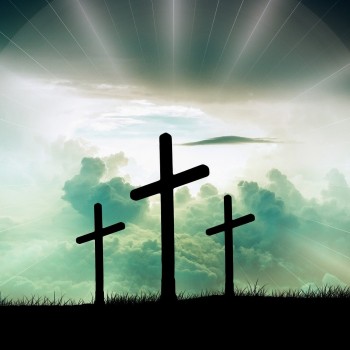
Fiesta de las Cruces
Date: Third week of May
The Fiesta de las Cruces (Festival of the Crosses), also known as Invención de la Santa Cruz (Invention of the Holy Cross) or Cruz de Mayo (May Cross), is a holiday celebrated on May 3 in numerous places in Spain and Hispanic America. Although quite popular, it is not an official government or church holiday.
The roots of the holiday go back to the finding of the Cross used in the crucifixion of Jesus (the True Cross) by Saint Helena, the mother of the Roman emperor Constantine. In the Gallican Rite, the Feast of the Cross commemorating this event was celebrated on May 3. Today, the Roman Catholic Church celebrates the Feast of the Cross on September 14.
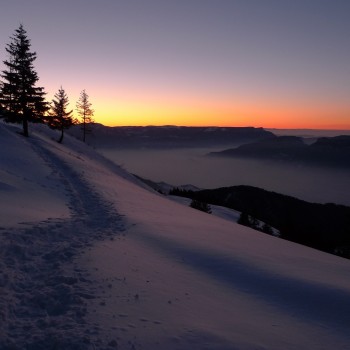
Inti Raymi
Date: June 24
Inti Raymi, the ancient Inca Festival of the Sun, is one of the most traditional Peruvian festivals on our list, indigenous in design and untouched by Catholic tradition. Held annually on June 24th, Inti Raymi is meant to celebrate the Winter Solstice.
Banned by the Spanish and the Catholic Church after 1535, the modern incarnation of the celebration began in 1944 based on the few historical records of the festivities that managed to survive. Since then, it has grown in size and scope. Though sometimes derided as tourist pageantry by detractors, its historical and cultural significance makes it worth checking among the many Peruvian festivals.
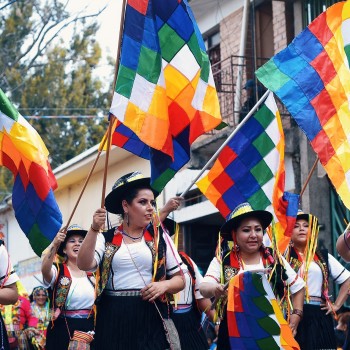
Pachamama Raymi
Date: First week of August
Peru’s festival dedicated to Mother Earth, Pachamama Raymi, takes place in the first week of August every year. Celebrations unfold in Cusco, the former Inca capital. People give tributes to Pachamama to show thanks for the bounty of crops that support their communities.
On the first day of August, farmers halt work on their land and prepare offerings as a sign of respect to Pachamama. The first plate of food from the feast they prepare is given to Pachamama, and any other offerings are buried in the ground.
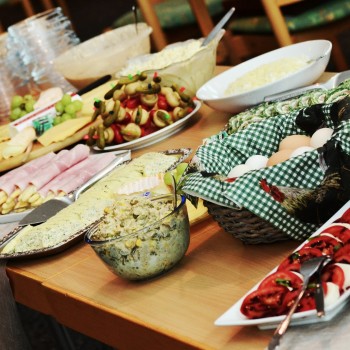
Mistura Culinary Festival
Date: September
Peruvian cuisine is one of the world's best, and Lima, in particular, features what is probably South America's most impressive culinary scene. And as if the food wasn't enticing enough year-round, the prospect of eating your way through Peru becomes even more appealing each September when the Mistura Culinary Festival rolls around. Featuring over 200 restaurants and bars, not to mention plenty of outdoor vendors and food carts, well over half a million visitors stop by to enjoy the festival's offerings over some ten days in mid-September. Though certainly not one of the most traditional Peruvian festivals on our list, this is without a doubt the most delicious.
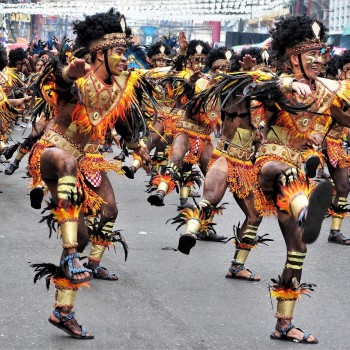
Procesión del Señor de los Milagros
Date: October
An 18th Century earthquake destroyed a good part of town, leaving only this iconic image of Jesus Christ standing. It was considered a miracle; the image became even more venerated.
With time, the celebration of its feast day became the most significant religious celebration in Peru, featuring one of the longest processions of any religious gathering in the world. This considerably more solemn celebration is one of the most important Peruvian festivals, and we couldn't leave it off our list.
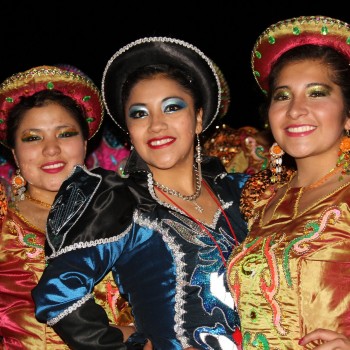
Puno Week
Date: Beginning of November
Puno Week occurs during the beginning of November and centers around November 5th, also known as Puno Day. The purpose of Puno Day, and by extension Puno Week, is to celebrate the legendary birth of one Manco Cápac, said to be the first Inca.
It involves an exciting reenactment of his arrival on the shores of Lake Titicaca bordering the city, and it's also just a great excuse to party the whole week long.
Attractions / Top Sights

Machu Picchu
When to visit: June-August
Perched high upon a ridge, 300 meters above the Urubamba River, the majestic Inca City of Machu Picchu is one of the most dramatic settings of a ruined city anywhere in the world. Almost as impressive as the ruins themselves is the spectacular backdrop of steep, lush, and often cloud-shrouded mountains.
Standing near the caretaker's hut, looking out over Machu Picchu, the jungle-covered mountains, and the river far below, you can imagine why the Incas chose this place to build their city.
Hiram Bingham came across Machu Picchu in 1911 and believed until his death that it was the "Lost City of the Incas," first documented by Spanish soldiers in the 1500s. However, historians believe the actual lost city of the Incas was at Espíritu Pampa, a ruin Bingham knew of but discounted as being insignificant.
The journey is also part of the experience of visiting Machu Picchu, whether by hiking the Inca Trail or seeing the route by train. In either case, it's impossible not to be inspired by the scenery. Trains leave from Cusco, Ollantaytambo, or Urubamba to Aguas Calientes.
From Aguas Calientes, the town below Machu Picchu, a bus takes you up to Machu Picchu, about a 20-minute drive along a difficult switchback road. Walking up this road to the site is possible, but this is a long, uphill climb and not recommended.
As of January 2020, new admission rules are in place for Machu Pichu. You must tour with a guide, you must follow a set tour route, and you must enter the park at a designated time.
The high season is June to August, but the two months on either side of this also see decent weather and can be a
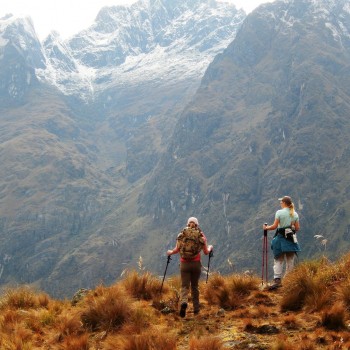
The Inca Trail
When to visit: June - August
The famous Inca Trail is a four-day hike, which terminates at Machu Picchu, and is regarded as the highlight of their trip to Peru. This scenic trail is often more demanding than what many people are expecting but also more rewarding.
A couple of different starting points for the Inca Trail exist, but the traditional four-day hike begins at km 82 of the Cusco - Aguas Calientes rail line. From this point, the trail passes more than 30 Inca ruins and traverses through spectacular scenery. The most challenging portion of the trail is the second day of the hike, with a climb of 1,200 meters in elevation gain and two high passes.
The hike must be done with an agency, and reservations should be booked well in advance, particularly in the high season of June to August.
Some agencies offer a shorter version of the hike, which entails the last two days or just the last day of the trek. There are campgrounds at intervals along the trail and one at the base of Machu Picchu.
Depending on the type of tour, hikers can either carry their backpacks or have them transported for them. The daily number of hikers and porters on the trail is strictly enforced.
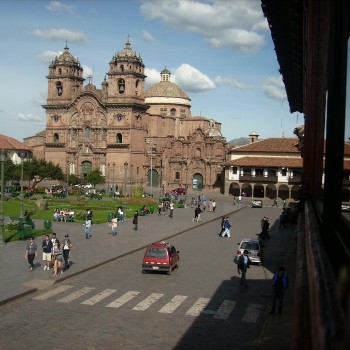
Cusco's Architectural Treasures
When to visit: May to September
Walking through the streets of Cusco is like wandering through a museum, with history built upon history in this UNESCO World Heritage Site. Inca ruins have been used in the foundations of many of the lovely old colonial buildings lining the narrow roads, showcasing the city's long history.
The main square, Plaza de Armas, in the city center is home to the Cathedral and La Compania, two equally impressive structures. The square is also a great place to start a walking tour, grab a meal, or people-watch during the day.
And while there are countless buildings and museums worth visiting, the church of Santo Domingo, resting on the ruins of the Inca site of Coricancha, is one of Cusco's must-see attractions.
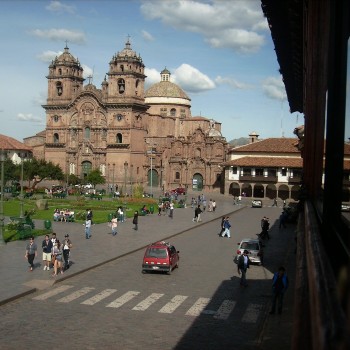
Lake Titicaca
When to visit: June to August
The lake area is beautiful scenery and culture that sets it apart from other country regions. Rolling hills and traditional small villages surround the sparkling blue water of Lake Titicaca. Sitting at 3,820 meters above sea level, Lake Titicaca is known for being the highest navigable lake in the world.
One of the main tourist attractions is the Uros Floating Islands (Islas Flotantes), which sustain small communities of Uros Indians. These are artificial islands constructed of reeds that have sustained a traditional way of life since the time of the Incas. A boat trip to the islands and surrounding villages is the best way to appreciate the lake.
On tours to these islands, what you'll see is designed for tourism, but it does offer a glimpse into a traditional way of life. The floating islands are only one tiny part of Lake Titicaca's attraction, with the natural charm lying in the small villages in the hills along the shores of Titicaca and on the main islands of Isla Taquile and Isla Amantani.
The main gateway to Lake Titicaca is the city of Puno, where you'll find hotels, restaurants, and travel agencies. There are trains and buses to Puno and flights in and out of the nearby city of Juliaca.
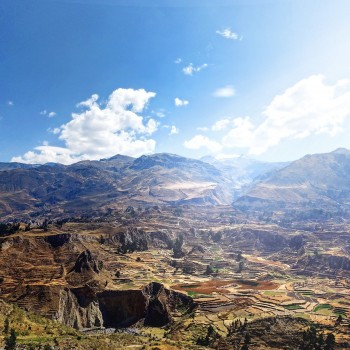
Colca Canyon (Cañon del Colca)
When to visit: Between March and June
Although it was once thought to be the deepest canyon globally, Colca Canyon (Cañon del Colca), twice as deep as the Grand Canyon, is the second deepest after nearby Cotahuasi Canyon. The canyon reaches a depth of 3,400 meters and results from a seismic fault between two volcanoes. At the base far below is a winding river.
The Colca Canyon area has been inhabited for thousands of years and was home to the Collagua, Cabana, and Inca peoples. Stone terracing along the canyon walls dates to AD 800 and is still in use today.
The canyon is about a four-hour drive from Arequipa. Day trips to the canyon are available from Arequipa, but two or more days are recommended considering the driving time involved in accessing the canyon. Besides gazing out at the canyon, there are also hot springs, churches, villages, and Inca ruins to explore. Condors are also a big attraction in Colca Canyon as they soar past the cliff walls.
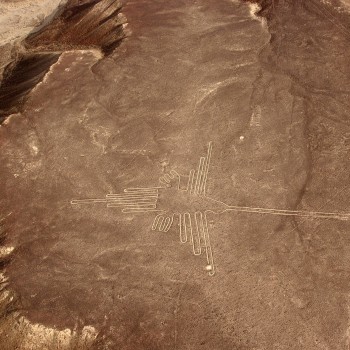
Nazca Lines
When to visit: Between May and September
The mysterious Nazca lines are an unusual sight that will leave you with a sense of awe. These vast images on the desert floor were relatively undiscovered until planes flying over the area in the 1920s saw the lines from the air and realized they formed distinct patterns and images.
Until that time, there was some recognition of the hillside drawings near Nazca and Paracas, seen from ground level. However, the vast graphics on the flat desert floor are so large that it requires an aerial view to be appreciated.
It is possible to see 70 different plant and animal drawings and hundreds of lines and other geometrical shapes from the air. Some of these lines stretch as long as 10 kilometers, spread over hundreds of square kilometers. The figures are a lizard measuring 180 meters long, a condor with a 130-meter wingspan, and several others: a monkey, hummingbird, ki.
The lines were created by removing the dark surface layer of stones and piling them at the sides of the lines, creating a contrast between the dark rocks and the exposed lighter soil below.
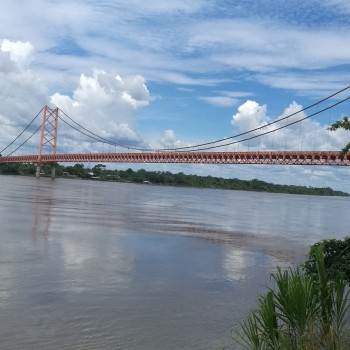
Puerto Maldonado
When to visit: May- December
Puerto Maldonado is located in the southeast of the country. It is the capital of Madre Dios; it has the official title of Biodiversity in Peru to recognize vital records of flora and fauna found in the forests department, especially in the Manu. The region is home to native tribes for whom the advance of civilization has not yet arrived. Iquitos is the capital of Loreto and the largest city in the Peruvian Amazon.
Iquitos is the sixth-largest city in Peru. It is located northeast of Peru, set on the left shore of the Amazon River. Due to the rugged geography of the Amazon, Iquitos has no roads, and communication is by air or river.
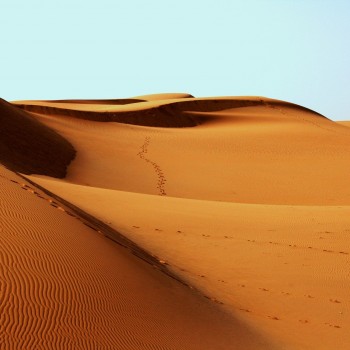
Ica and the Sand Dunes at Huacachina
When to visit: June to August
For the sporting type looking to try something a little different, the oasis resort of Huacachina on the outskirts of Ica has just the answer. This picture-perfect, palm-fringed resort town just west of Ica is situated around a lagoon surrounded by massive dunes, some of which reach 1,000 meters in height.
People come here to try out the sport of sandboarding. Like snowboarding, sandboarding involves surfing down the sand dunes on specially made sand-boards rented in the area. For the less coordinated, renting dune buggies is another excellent way to get out and enjoy the landscape.
Ica is slightly higher than the ocean and is not affected by the usual coastal mist like other towns along this stretch. The town has a year-round sunny and dry climate, making it an excellent place to visit at any time.
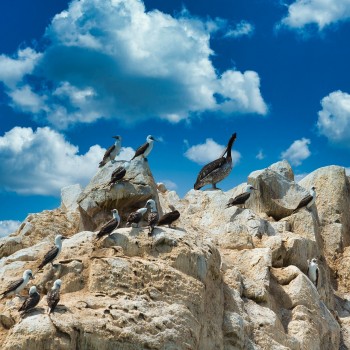
Pisco and the Ballestas Islands (Islas Ballestas)
When to visit: December, January, and February
The main reason to come to Pisco, about 200 kilometers south of Lima, is to see the nearby Islas Ballestas and the Reserva Nacional de Paracas on the Paracas Peninsula. Almost directly west of Pisco, the Islas Ballestas, sometimes referred to as the "poor man's Galapagos," are home to hundreds of thousands of birds, large colonies of sea lions, pelicans, penguins, and dolphins.
Boat tours from Paracas and Pisco, which visit the islands daily, leave in the morning. The whole tour takes you past the "Candelabra," a hillside geoglyph is seen from the coast, and then spends a considerable amount of time boating around the islands watching for wildlife. This tour is generally a half-day trip, returning around noon.
The Paracas Peninsula, jutting out into the Pacific Ocean just south of Pisco, is home to the Reserva Nacional Paracas and Peru's most extensive protected coastline. The shoreline of the Paracas Peninsula supports a wide variety of wildlife, with approximately 200 species of seabirds, two types of sea lions, a rare kind of an otter, and the endangered Humboldt penguins.
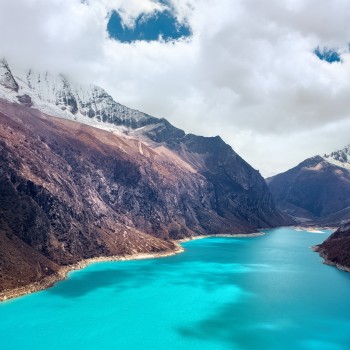
Cordillera Blanca
When to visit: Between May and September
The Cordillera Blanca draws mountain climbers, hikers, and outdoor enthusiasts worldwide, a stunning area of mountains and valleys.
The Cordillera Blanca is home to Peru's highest peak, Huascaran. Also located in the same area of the Andes are sixteen other mountains over 6,000 meters in height.















